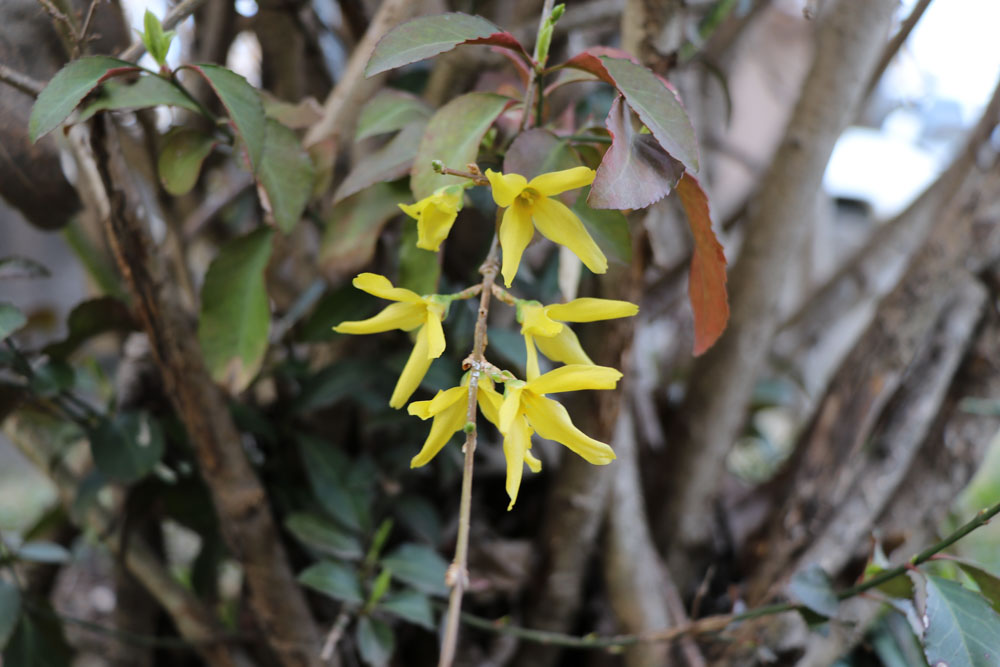Forsythia suspensa

March 4, 2017 - Never really bloomed by March 22nd it had green growth
March 14, 2018
March 22, 2019
March 10, 2020
March 26, 2022
March 2, 2023 - Dug Forsythia out
2024 March 2 Neighbor's bloomed

This photo was taken in 2002.
Our Forsythia was in our yard when we moved into the house. We enjoyed it for many years, but it was located near the front corner of the house with little space between the stone wall and the bush to push the lawnmower through to mow the small patch on the side of the house. This required it to be kept cut back and maintained constantly. Since it blooms on new growth, I would cut it early in the Spring after it bloomed and then tried to let it grow without much cutting thereafter. However, I often had troubles with low blooms each Spring. In 2023, on a whim, I decided I had enough of the constant maintainance with little outcome that the bush was dug up and we moved the Red buckeye into its place. This tree is slow growing with sparseness between the branches. My idea is to train it so it has a branch that grows in front of the large picture window.
Forsythia suspensa | Forsythia
Oleaceae (Olive Family) Oh-lee-a-SEE-eye
Pronounced For-SITH-ee-ah Su-SPENSE-a
Suspensa means "hanging." The genus is named after William Forsyth who died in 1804 and was a Scottish botanist and royal head gardener. He founded the Royal Horticultural Society.
The Forsythia is a fast growing shrub. Being as they are everywhere, you would think they are native, but they are not a native plant.
As soon as the blooms are done in the Spring, prune the shrub back. This shrub blooms on new growth the next Spring. That is, after you prune the shrub, it will begin growing quickly and this new growth is where the new flowers will come forth the next year. Even then, the thing would grow so fast and wild that I would snip random strange branches throughout the summer just to keep it looking nice. I think I am the rare person to want my Forsythia to look ornamentally perfect. Most folks embrace the graceful wild arches.
Some years I would prune my Forsythia just to shape it nicely and contain it to its space in the yard. Sometimes this was sufficient to get good blooms the next year, but sometimes I would only get a few blooms. Then I would try cutting it back severely by taking out random inside branches to the ground. The next year it would seem to take off again.
Low hanging branches can take root causing the plant to grow into a massive entangled mess. Sometimes this shrub is called a Weeping Forsythia because of the long arching branches.
These shrubs are sun-loving and bloom rather early in the Spring.
There are other varieties or species of Forsythia, including hybrid ones, but being as we have now removed our Forsythia, I do not at this time plan to study the differences in species.
2023

2022



2019

2018



2017




2016


This must have been the year it barely bloomed.
2015

2014

2012

2011


2008

.jpg)
2007



2006

It was really gorgeous in 2006! I think this is the year I pruned it a lot within the middle of the shrub.

This shows how it grew scraggly branches rather long. I was always trimming them back because we needed to get through this space with the lawn mower. A Forsythia really needs to be planted at the right location.
2002

